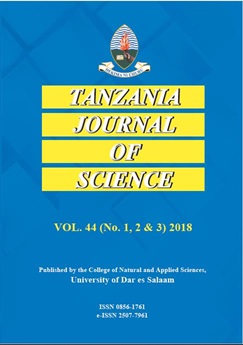Land Use €“Land Cover Change and Implication to Biodiversity in Kihansi Catchment
Abstract
Land cover-land use (LC-LU) change has significant impact on wetland ecosystem. This study examined the impacts of LC-LU change on spray wetland ecology at Kihansi Gorge and implications to conservation of fragile biodiversity. Remote sensing methods were used to asses land cover changes from 1990 to 2015 and to forecast change in 2035. It was revealed that forests decreased from 28,454 to 10,897 ha and woodland from 26,903 to 19,914 ha. In 1990, woody cover dominated with a total cover of 38% of the entire catchment. The cropland that included grassland and bushland with scattered crops has been on the increase and it expanded to 51% of the total catchment area by 2015. The expansion of crop land and bushland are expected to continue increasing at the expense of other land cover types. It has been forecasted that by 2035 the grassland and natural woody cover will be occupied by seasonal mono-crops. Currently, exotic plantations are replacing natural vegetation cover and this has negative impacts on catchment biodiversity and riverine species. Alteration of terrestrial vegetation cover results into changes in river flow regimes, that impact species that depend on specific water flow characteristics. Land use practices introduce sediments, fertilizers, manure and pesticides in rivers that impair water quality and this is detrimental to aquatic biodiversity. The most important species significantly impacted by the LU-LC change in the Kihansi catchment is the extinct of Kihansi Spray Toad (KST).
Keywords: Kihansi; land cover change; biodiversity; prediction; remote sensing;


